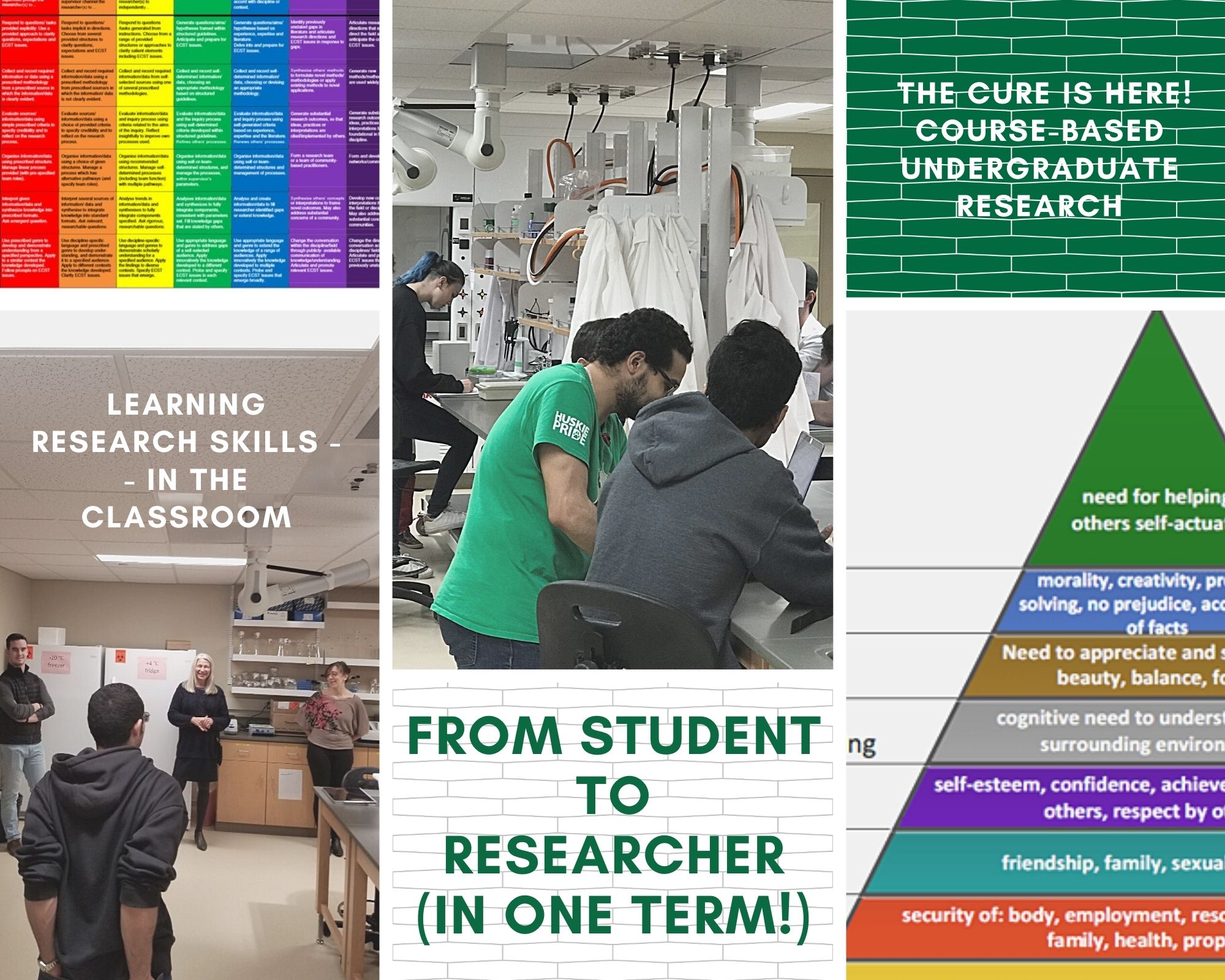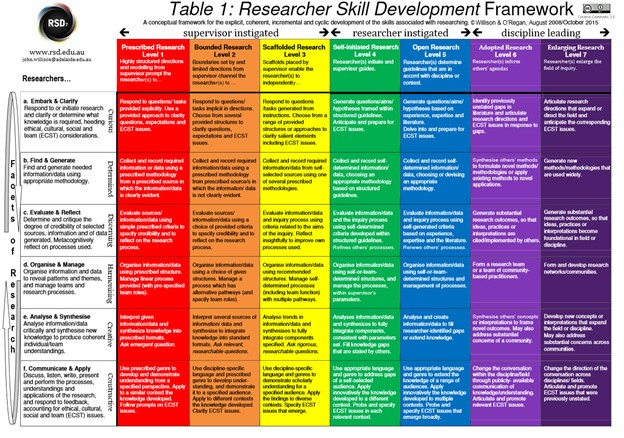
From Student to Researcher (in one term!) Post 16: 'Dawning' of the CURE (prequel 1)
A prequel story to the CURE
By Dawn Giesbrecht, Harold Bull and Sheryl Mills(This blog series is authored by USask denizens Harold Bull, Dawn Giesbrecht and Sheryl Mills) Harold is Assistant Professor Biochemistry, Microbiology & Immunology. Dawn is Laboratory Instructor Anatomy, Physiology and Pharmacology; Biochemistry, Microbiology and Immunology. Sheryl is Associate Director, Academic Programs & Interprofessional Education)
Overview
Long before the dawn of CURE at the University of Saskatchewan, Dawn Giesbrecht had unwittingly stumbled upon an instructional approach that would fundamentally alter the way she viewed how students interacted with research in an academic setting. With a simple shift in one small segment of her traditional lab (TL) course, Dawn was able to incorporate an open-ended research-based discovery experience for her third-year learners. This instructional experiment had surprisingly encouraging outcomes. There were no false positives here! In this post, we share how Dawn made this shift.
A Compelling Reason for Change
In traditional lab (TL) courses, the same protocols may be used year after year, decade after decade. This is not unusual. Because of the significant effort, time, and resources to make changes in a course, a substantial underlying motivation to change is generally required. We don’t think many of us suddenly up and change things in our courses without a strong compelling reason—or a confluence of compelling reasons.[1] 😉
🤔 The Problem: The problem Dawn had identified was the gap she had observed in the students’ understanding of the scientific process. She wanted to address this gap.
🤓 An Answer: Serendipitously, at a conference poster presentation[2], around the same time as Dawn was pondering this gap, she was introduced to the idea of creating trial-sized research-based components in TL courses.
😊 The Opportunity: It just so happened that there was a ‘less than stellar’ two-week lab[3] in Dawn’s TL course. The approach she had been introduced to at the conference (1) would not take a great deal of work to incorporate, (2) required no additional resources, and (3) could be easily swapped into a two-week spot currently held by the ‘less than stellar’ lab. She felt this approach could directly address the gap and the disconnect between discovery-based research and the prescribed labs in TL courses. Eureka! Worth a go!
✅The Action: To get this instructional experiment underway, Dawn simply deleted the ‘less than stellar’ lab from the lab manual and replaced it with the open-ended research-based discovery experience.[4]
And the fun began!
What was different for the students?
The students started preparing earlier in the term for their team-based research project by gathering inspirational research papers, learning to work with tissue culture cells, and coming up with possible research questions.
Teams tested their hypotheses over two weeks. They then reported their findings in two ways: (1) written lab reports and (2) oral presentations (10 minutes presentation, 5 minutes for questions).
Little did learners know they were engaging in team-based science doing authentic research! They had: (1) generated their own research questions, (2) established their methods and protocols, and (3) shared their findings with peers and colleagues.
There were some surprises along the way…
Dawn first ran this component in her TL course in 2015. Although Dawn describes the first iteration as stressful, over the years it became easier and easier to organize, to run, to support, and ultimately to expand this aspect of the TL course. At the beginning though, there were some surprises:
- Initially, there was confusion in the student body. What, no right answer? Who’s doing what? What do you mean there’s no right answer? What is this worth? How do I get started? This all sorted itself out rather quickly.
- The second surprise was the high degree of learner investment and engagement in the project.
- For Dawn, as the instructor, it was surprising that there could be such constructive ‘organized chaos’ amid a myriad of questions and doubts[5]: Who will be doing what? What’s my role? What is the role of my TAs? What will the students think? Can they manage this on their own in their teams? Will the teams work? Will this work?!?
- But there was yet another surprise after the course ended…the change of tone in student evaluations! The evaluations certainly hadn’t been terrible before, but the engagement and enthusiasm generated in the two-week research component shone through, impacting learners’ overall perceptions of the course.
- And one last surprise…The biggest ‘complaint’ in the student evaluations was that there wasn’t enough time to thoroughly explore their research question!
Given the contagious enthusiasm and engagement of the learners, giving more time over to this guided discovery section of the course made absolute sense – what started out as two weeks has been expanded to four weeks![6]
And the rest is history…
When Dawn and Harold started working together on the CURE course[7] in 2017, Dawn had successful iterations of her ‘instructional experiment’ to draw on—enough to know that this would definitely work! When Sheryl introduced the Research Skills Development Framework (RSD7) to Harold and Dawn, Dawn could see that by making this one simple shift in her TL course, the focus had shifted for the learners from Prescribed Research (Level 1) to Bounded Research (Level 2). And a CURE course would shift the levels again!

Is it time to make history in your course?
In your course, you may want to consider how you might provide opportunities for your learners to engage in open-ended research-based discovery experiences. Like Dawn, by easing in gently and appropriately supporting the change from recipe-following to experimenting with ingredients to create new recipes, you too might unleash a whole new level of engagement and enthusiasm in your course.
If you want to hear more about how Dawn incorporated this approach in her TL course, you may want to check out the podcast Tales and Trials of Research.
Go here to find all blog posts in this series
Previous post in this series is here
Next post in this series is here
Podcast series:
All about CURE:
The MightyChondria Team:
[1] Common reasons to make instructional changes: update content, address a change in allocated resources, expand use of technology, accommodate a grant component, address difficult threshold concepts, add to a category in one’s CV, etc.
[2] Shout out to the Association for Biology Lab Educators (ABLE)
[3] You know the labs – ones that are supposed to turn out a certain way (because they are from a cookbook after all) but end up with less-than-reliable/reproducible results.
[4] Some “science” specifics: Dawn simply told the groups that their goal was to alter the cytoskeleton of tissue culture cells in some way.
[5] This is certainly not usual at all when we are trialing something new!
[6] And students still say they would like more time to repeat their experiments!
[7] Earlier posts in this series can fill you in on that adventure!

